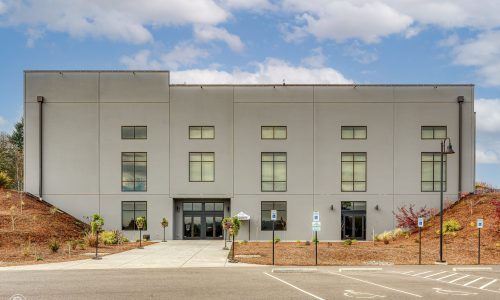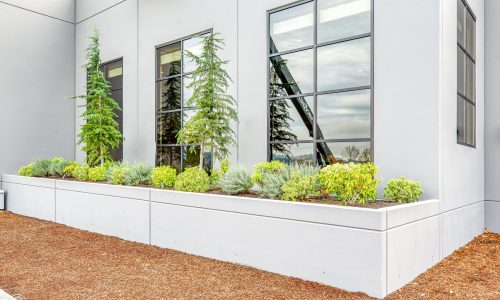The Athey Creek Fellowship
In August of 2021, we spent two weeks painting The Athey Creek Fellowship. It is a large church with concrete/masonry siding located in West Linn, Oregon. It is approximately 160′ x 210′.
The building was built and painted 12 years previously. The paint had faded and there was efflorescence in some areas as well as marks from signage.
Because of the efflorescence, we did a solvent wash with the power wash, removing the efflorescence, dirt and small areas of rust. It helped remove some of the adhesive from the signage, but we also primed the areas where the signs/banners had been. Because of the large flat areas to be painted, we were careful about spray patterns, mileage and keeping a wet edge. Since we were painting in August, we also monitored the wall temperature carefully.
Athey Creek is a very busy fellowship, with activities happening throughout the week. We couldn’t paint after 4 PM on some days and could not paint at all on other days. We also did not leave any masking or plastic on the building at the end of the day. None of the members who came to afternoon/evening activities were able to tell the building was in the middle of being painted except for the fresh paint on the walls and the booms parked in the outer area of the parking lot.
We used two boom lifts with socks. The socks on the wheels/tread were to protect the walkways. One boom had to have a large jib because the east side of the building had landscaped hills on either side of the entrance that would be damaged if a boom was driven on them.
The Final Product







